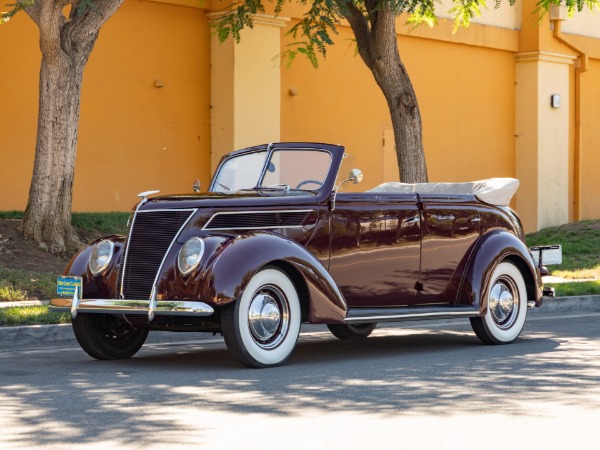The 1937 Ford Deluxe 221 V8 Phaeton stands as a true testament to the ingenuity and artistry of the automotive world. Its remarkable history, exceptional design, and groundbreaking features make it a captivating model that has left an indelible mark on the industry. Let’s delve into the fascinating and detailed journey of this iconic vehicle.
In the late 1930s, amidst a backdrop of economic challenges and a rapidly evolving automotive landscape, Ford Motor Company was determined to redefine the concept of luxury and performance. The 1937 Ford Deluxe Phaeton emerged as a pinnacle of innovation and sophistication, embodying the spirit of progress that defined the era.
Under the hood, the 1937 Ford Deluxe Phaeton housed the awe-inspiring 221 cubic inch Flathead V8 engine. This powerhouse of an engine showcased Ford’s commitment to engineering excellence and provided an exhilarating driving experience. With its 85 horsepower and abundant torque, the V8 engine propelled the Phaeton with effortless grace, setting new standards for performance and power.
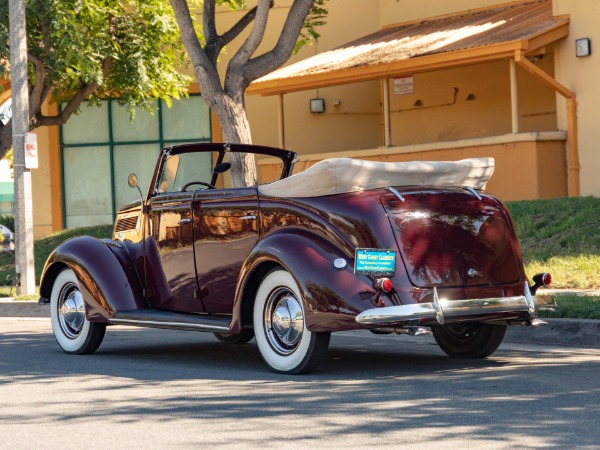
The exterior design of the 1937 Ford Deluxe Phaeton was a sight to behold. Meticulously sculpted lines and tasteful chrome accents adorned its sleek body, evoking a sense of timeless elegance. The prominent grille, with its distinctive vertical bars and the iconic Ford emblem, commanded attention and exuded a sense of authority. The open-top configuration of the Phaeton further enhanced its allure, inviting drivers and passengers to revel in the joys of the open road.
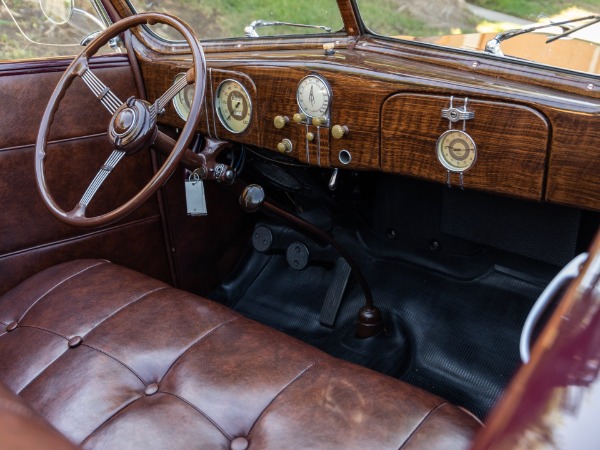
‘This is an extremely rare 1937 Ford Model #78 DeLuxe Phaeton 5-passenger 4-Door Convertible with a 221 CID V8 engine. This particular model is one of the few remaining examples from the penultimate year of production, with only 3,723 units built in 1937.
This stunning car showcases a beautiful older restoration that still retains its striking appeal. As one of the limited production Deluxe Phaetons, it is highly sought after by Ford enthusiasts. The car is finished in its factory colors and comes accompanied by side curtains, adding to its authenticity.
Under the hood, you’ll find the impressive 221 CID V8 flathead engine, delivering 85 horsepower. It is paired with a three-speed manual transmission, providing a smooth and enjoyable driving experience. The car features a solid front axle and live rear axle with transverse semi-elliptic leaf springs, ensuring a comfortable ride. The four-wheel hydraulic drum brakes provide reliable stopping power, while the rear-wheel drive configuration adds to the car’s classic appeal. The wheelbase measures 112 inches, further enhancing its stability on the road.
Ford stood apart from other automakers by continuing to produce open cars well into the 1930s, even as sedans and coupes gained popularity. While the market shifted towards cars with glass side windows, Ford remained committed to offering fully open cars. The 1937 Ford Phaeton, alongside the roadster, represented the final examples of fully open cars produced by Ford. In 1938, open cars were limited to the DeLuxe model line.
This 1937 DeLuxe Phaeton is a rare gem, showcasing the early 21-stud 221 CID V8 engine and a 3-speed manual transmission with a 3.78:1 differential. The car proudly retains its original ‘Bright Coach Maroon’ factory color paint and exhibits a rust-free body with precise body contours and even door gaps. The interior has been reupholstered in Brown, featuring matching door panels and carpets. The iconic banjo steering wheel and stem-wind clock in the glove box door add to the car’s nostalgic charm. Completing the authentic look is the taupe canvas top, while the clean and rust-free undercarriage reflects the exceptional care this car has received. The original wheels are fitted with whitewall tires, adorned with original spider hubcaps and trim rings. The spare wheel is securely located in its original trunk spot.’
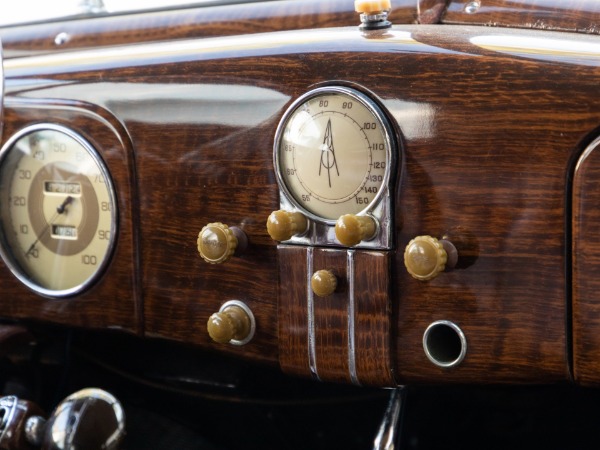
Henry Ford, the visionary founder of Ford Motor Company, played a pivotal role in the development of the 1937 Ford Deluxe Phaeton. His unwavering dedication to innovation and pursuit of perfection guided the company’s relentless pursuit of excellence. Under his astute leadership, the Phaeton underwent extensive testing and refinement, ensuring that it met Ford’s exacting standards of quality and performance.
LEGENDARY DESIGN:
The design brilliance of the 1937 Ford Deluxe Phaeton can be attributed to a team of visionary designers, including the influential Bob Gregorie.
Born on July 20, 1908, in Gary, Indiana, Gregorie developed a passion for automobiles at an early age. His artistic talent and interest in automotive design led him to pursue a career in the industry.
In 1931, Gregorie graduated from the Art Institute of Chicago and began working as a designer at the Briggs Manufacturing Company, an automotive body manufacturer. It was during his time at Briggs that Gregorie’s talents caught the attention of Edsel Ford, the son of Henry Ford and president of Ford Motor Company.
In 1932, Edsel Ford hired Gregorie as a designer for Ford Motor Company, marking the beginning of a fruitful collaboration. Gregorie’s ability to translate Edsel Ford’s design vision into practical and appealing automobile designs quickly earned him recognition within the company.
Gregorie’s artistic sensibilities and keen eye for aesthetics were instrumental in shaping the exterior design of the 1937 Ford Deluxe Phaeton. His meticulous attention to detail and innovative design ideas elevated the car’s visual appeal, making it a standout in its class. Gregorie’s collaboration with Henry Ford and the design team resulted in a harmonious blend of form and function, showcasing the artistic and technological advancements of the time.
The work of Bob Gregorie extended beyond the 1937 Ford Deluxe Phaeton. He continued to make significant contributions to Ford’s design legacy, playing a key role in the creation of other notable models such as the Lincoln-Zephyr, the Lincoln Continental, and the Ford Thunderbird. Gregorie’s designs were celebrated for their elegance, sophistication, and timeless beauty.
Gregorie’s artistic vision and keen eye for aesthetics left an indelible imprint on the car’s iconic look. His meticulous attention to detail and ability to blend form and function created a vehicle that was not only visually stunning but also technologically advanced for its time. Gregorie’s collaboration with Henry Ford and the design team yielded a masterpiece that captivated the automotive world.
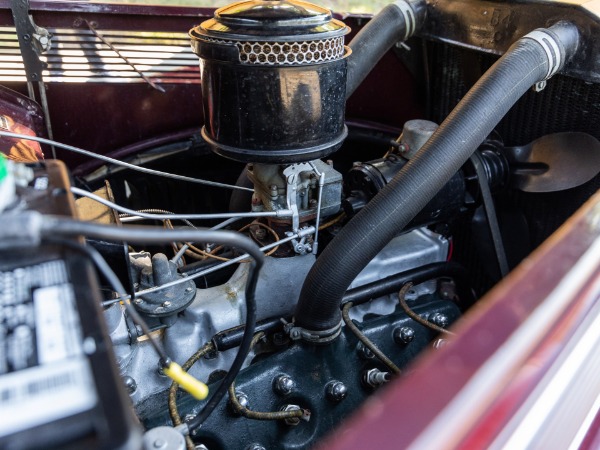
From the moment it hit the roads, the 1937 Ford Deluxe 221 V8 Phaeton garnered widespread popularity and critical acclaim. It became a symbol of prestige and aspiration, embodying the American spirit of progress and achievement. The Phaeton was not just a car; it was an emblem of success and an embodiment of automotive excellence.
Decades later, the allure of the 1937 Ford Deluxe 221 V8 Phaeton endures. Its rarity, historical significance, and timeless beauty continue to captivate collectors and automotive enthusiasts worldwide. Owning this extraordinary vehicle is a testament to one’s appreciation for automotive artistry and the enduring legacy of the Ford Motor Company.

